As we step into a new year, it’s time once again for CHEVRON’s trend forecast for 2025. Our close collaborations with leading and innovative architects and designers give us a clear picture of what’s to come—and natural materials are playing an increasingly significant role in our homes and environments. Floors are becoming more than just a practical surface; they’re a central element of the architecture—a canvas that sets the tone for the entire room. We’re seeing a movement towards bold contrasts, nature-inspired hues, and a resurgence of classic influences, all while innovative and internationally-inspired finishes open up possibilities for unique expressions.
Overview of 2025 flooring trends:
- Dark hues
- Grand dimensions
- Scandinavian minimalism with an international twist
- A wider variety of wood species
- Wood throughout the interior

1 — Dark hues
Dark colors on wood floors are poised to become a leading trend for 2025. They offer a sophisticated and dramatic aesthetic for modern homes and interiors. These deep hues, such as brown-stained oak, smoked oak, or black-stained ash, evoke a sense of timeless elegance while creating a striking contrast against lighter walls and furniture. Dark wood floors act as a solid foundation, anchoring the space and providing a sense of warmth and depth.
In an era where minimalist design meets personal character, dark floors strike the perfect balance between classic and contemporary. They highlight details like rugs, furniture, and artwork, contributing to a dynamic and inviting environment. Furthermore, dark floors are an excellent choice for creating a luxurious feel in both small spaces and large, open areas.
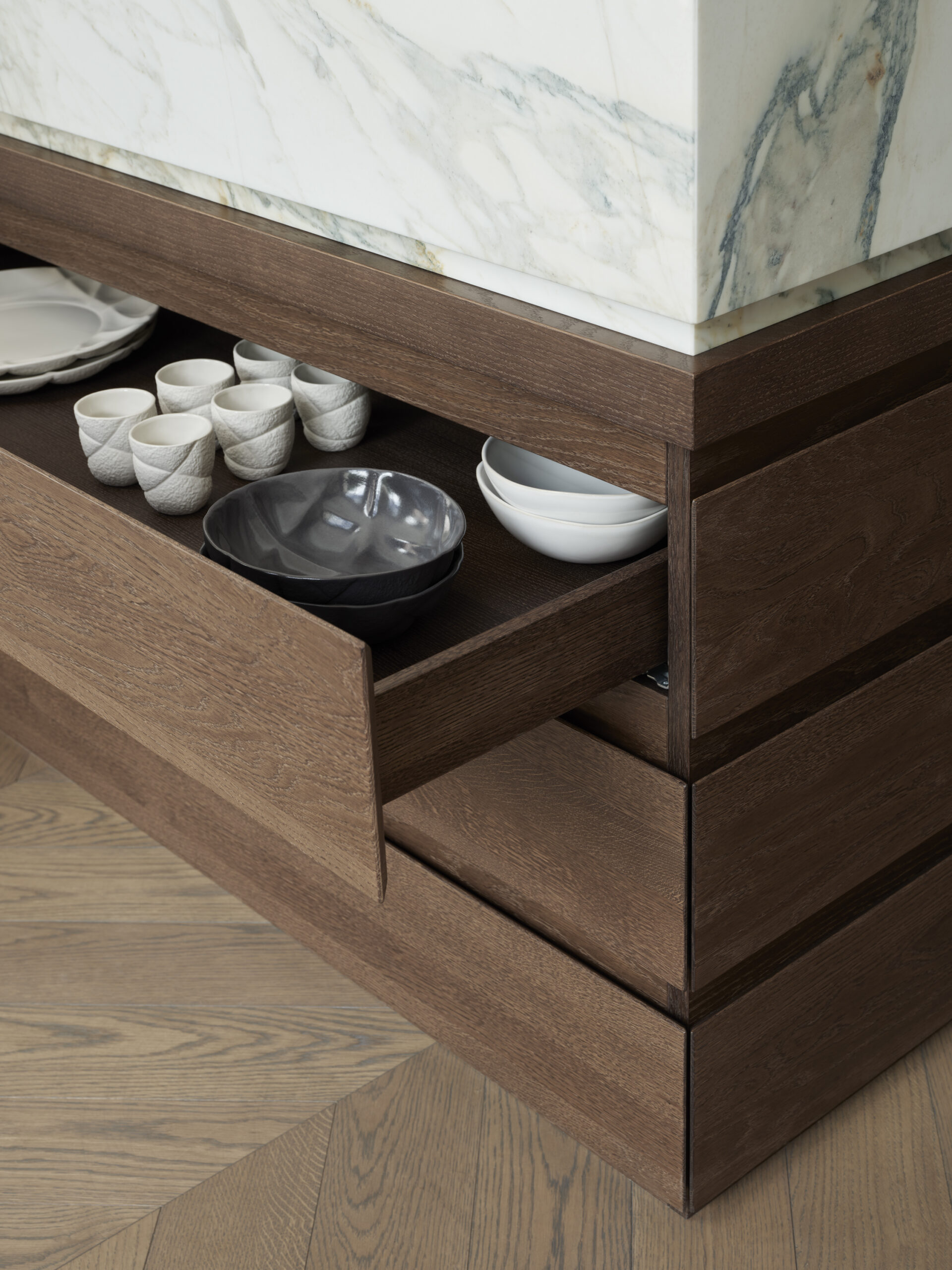
This trend also reflects a growing awareness of natural materials and sustainability. By choosing dark shades, you can create a unique and authentic feel that complements both urban and rural homes.
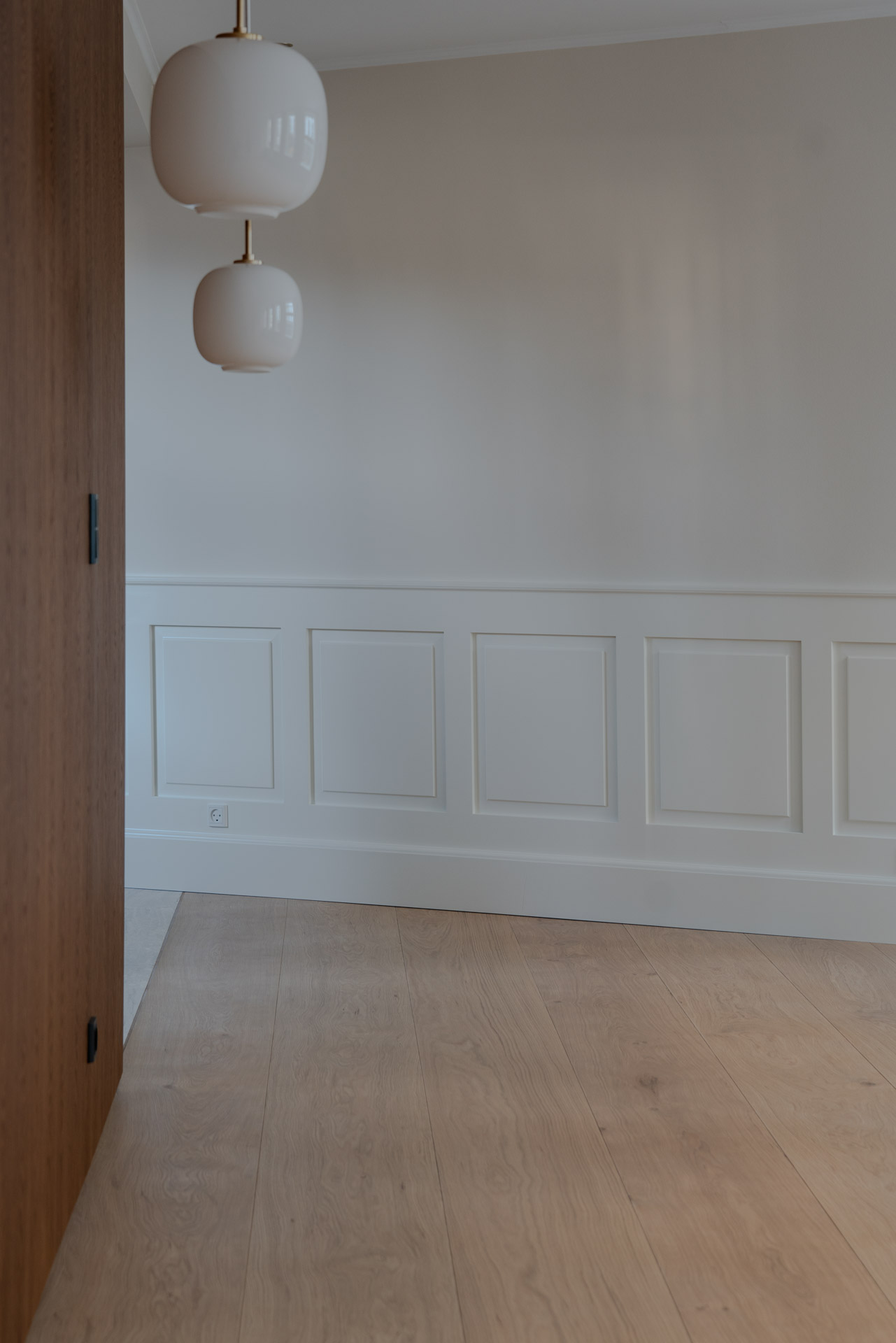
2 — Grand dimensions
Looking ahead to 2025, we’re seeing a clear shift towards wider and longer dimensions in wood flooring – this includes planks, chevron, and herringbone patterns. These generous proportions give rooms a sense of spaciousness and flow, creating a natural elegance that highlights both the materiality of the floor and the overall architecture.
Wide planks impart an earthy and robust feel, and their size makes each floorboard feel like its own work of art, an expression of natural beauty. The longer dimensions deepen this feeling and reinforce an impression of uninterrupted movement through the room, as if the floor itself contributes to the room’s flow and rhythm. This trend addresses a need to create more open and connected spaces, where the larger flooring ties together the different elements of the interior design and provides a sense of continuity. The width and length of the wood flooring open up new possibilities for designing and customizing the space, while the deep, rich wood tones create a warm, inviting atmosphere.
By combining traditional patterns with modern proportions, these floors reflect the design philosophy of 2025: embracing the classic while giving it a new, powerful, and architectural dimension.
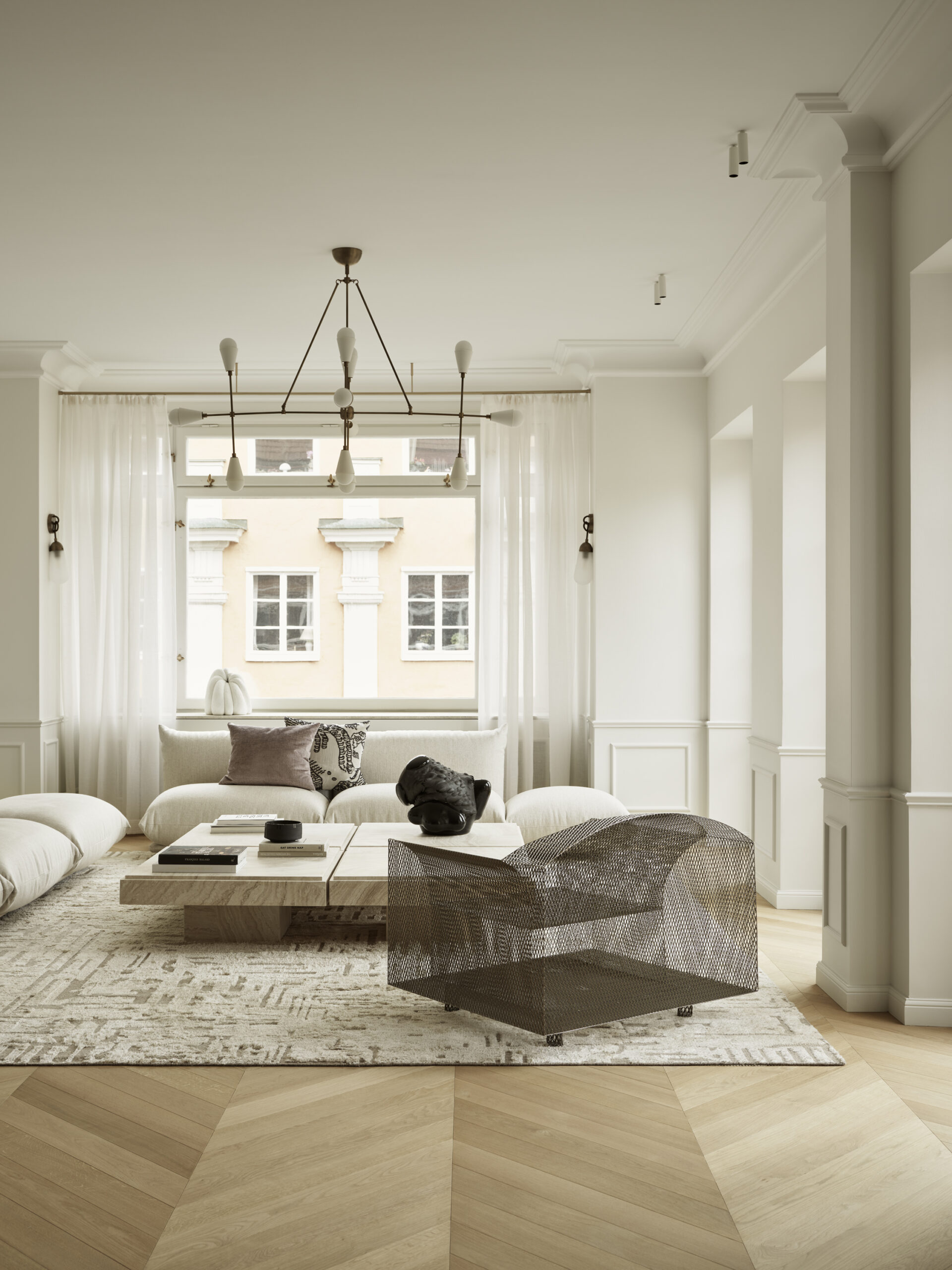

3 — Scandinavian minimalism with an international twist
Taking a global perspective, the simple beauty of Nordic aesthetics is merging with influences from diverse cultures and design traditions. This creates wood floors that are both timeless and contemporary. The Scandinavian sense of light, airy spaces and natural materials gains new dimensions when combined with new forms and color palettes.
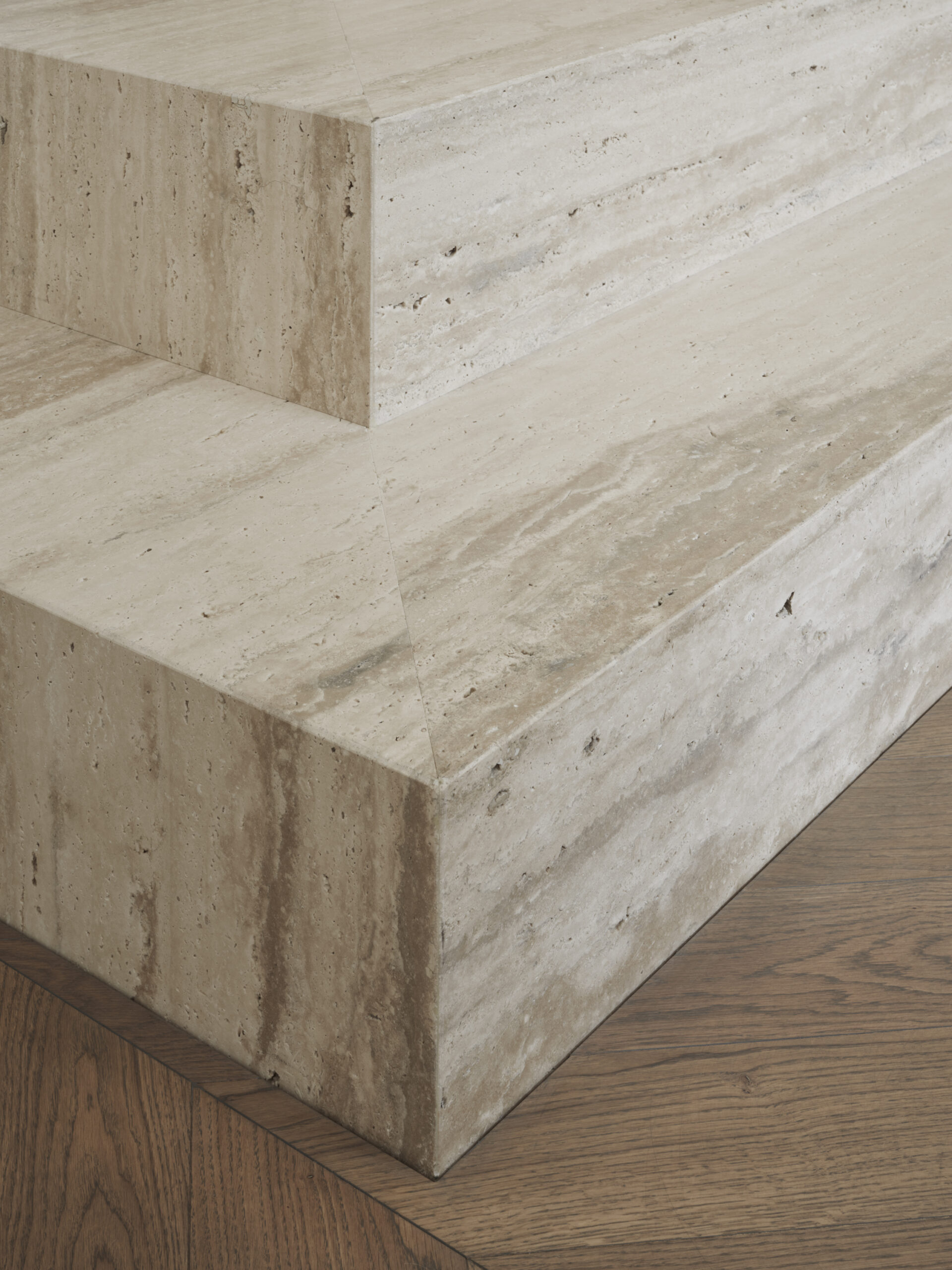
Scandinavian minimalism with an international twist is about embracing the global while maintaining a sense of authenticity and natural elegance. In 2025, wood floors become more than just surfaces to walk on – they become a bridge between different cultures and styles, where timeless Nordic design meets the worldly and expressive.
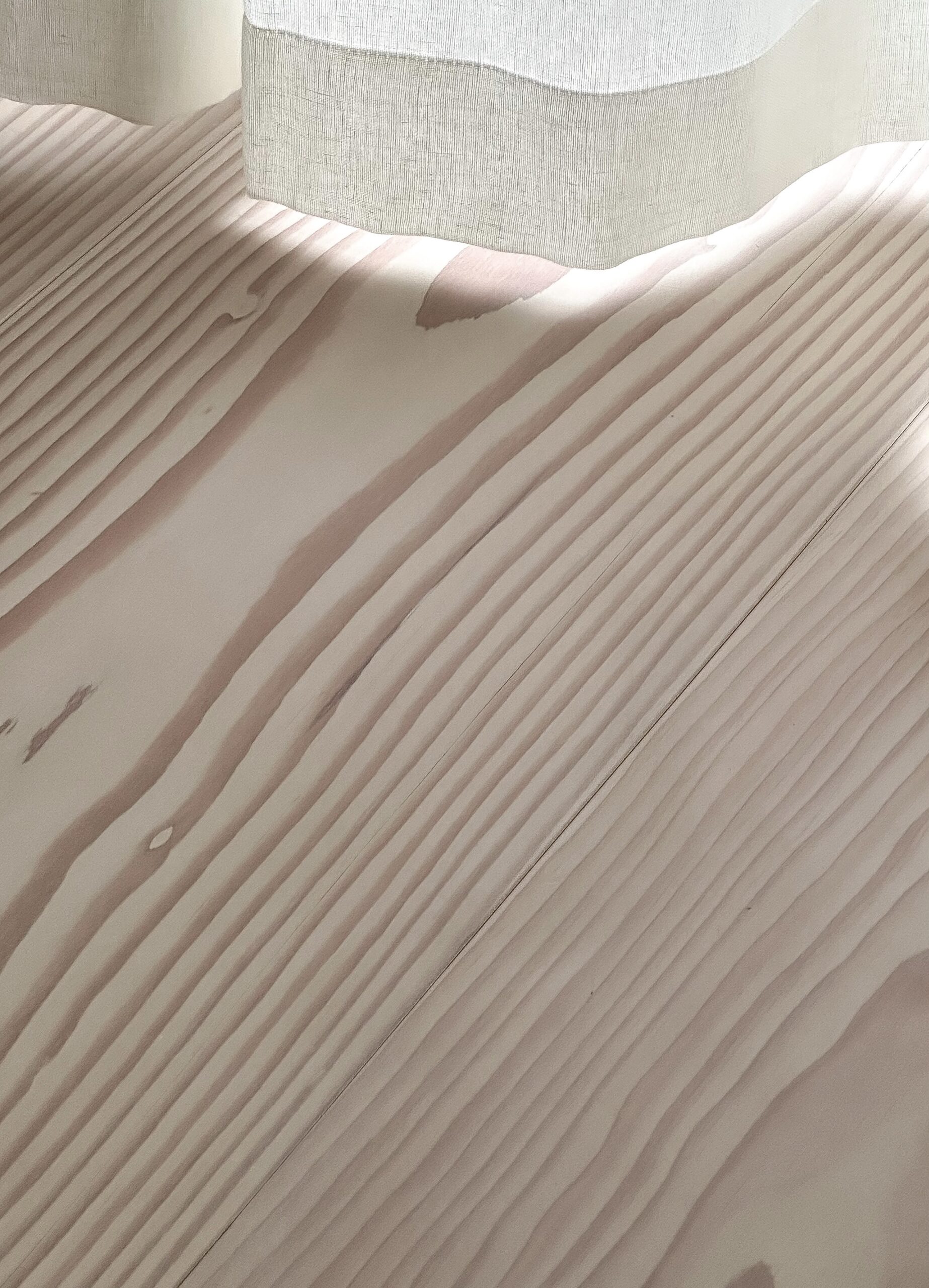
4 — A wider variety of wood species
Variety in wood species is becoming increasingly sought after. Wood species like Douglas fir and ash are gaining popularity. Combined with traditional woods like oak, new and unique expressions are created.
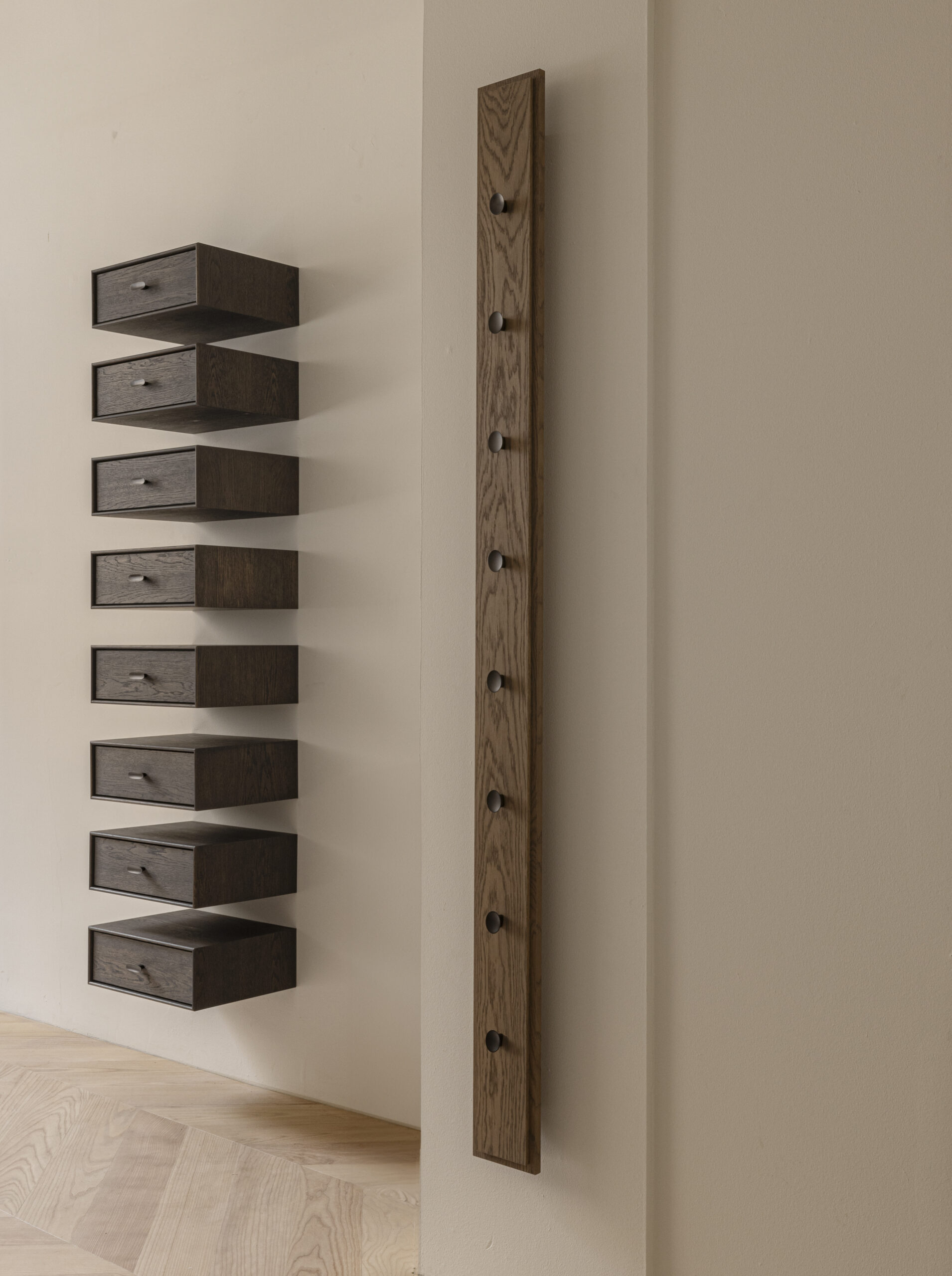
We’re seeing a significantly greater playfulness in the use of different types of wood, where each species takes on its own visual significance and is often combined with others. We often see light Douglas Fir contrasted with dark-stained Oak, or light ash floors paired with interiors in walnut or grey-stained oak.
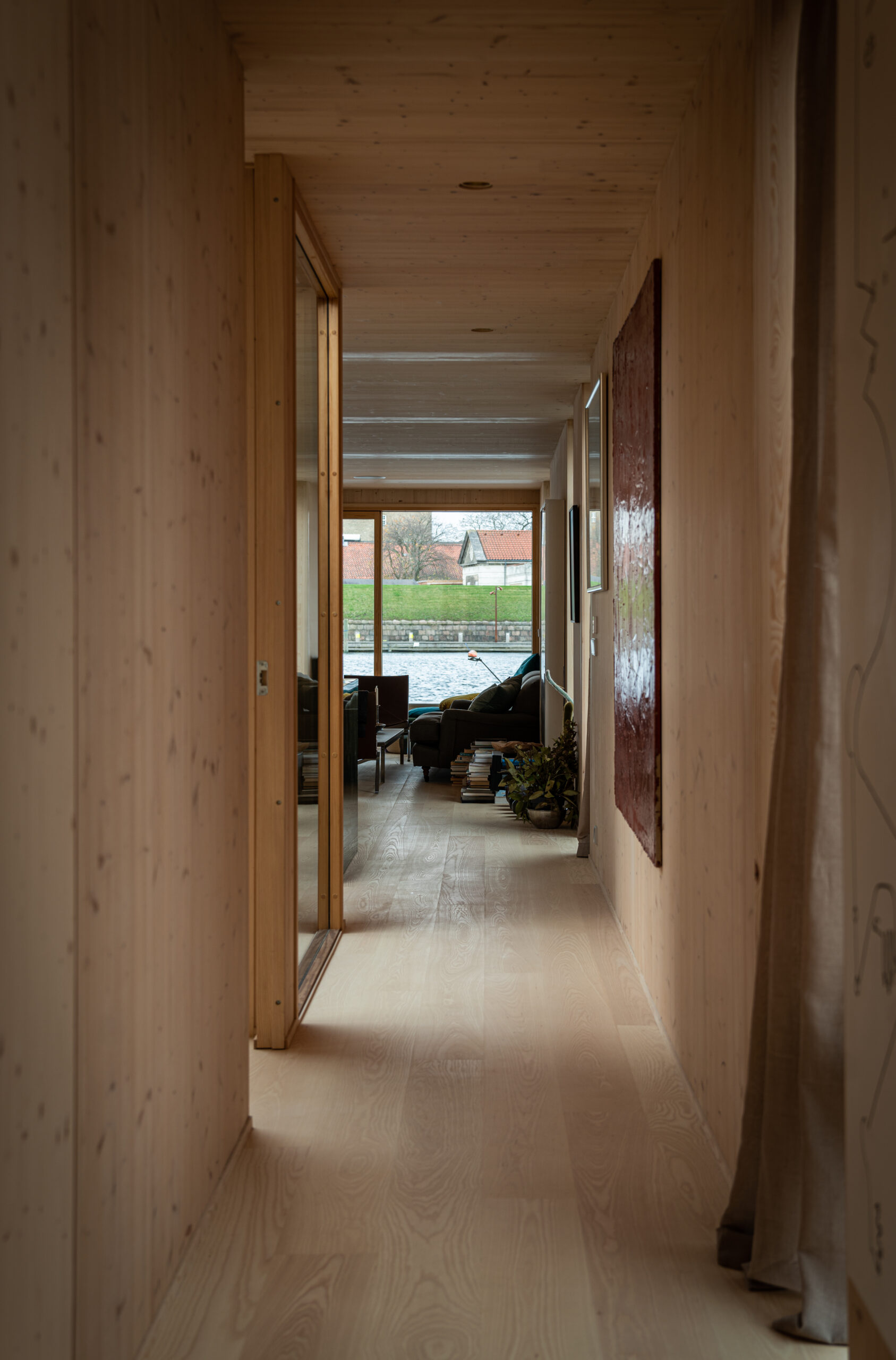
5 — Wood throughout the interior
Finally, we’re observing clear tendencies towards wood taking on a larger role in architecture overall, from wood floors to ceilings, walls, and kitchens. When wood is prominently featured throughout a home, from floor to ceiling, a cohesive aesthetic is created, where naturalness, warmth, and timelessness take center stage. This holistic approach to the use of wood reflects a deep understanding of both the material’s technical and aesthetic qualities, resulting in spaces that are sustainable, healthy, and aesthetically beautiful.
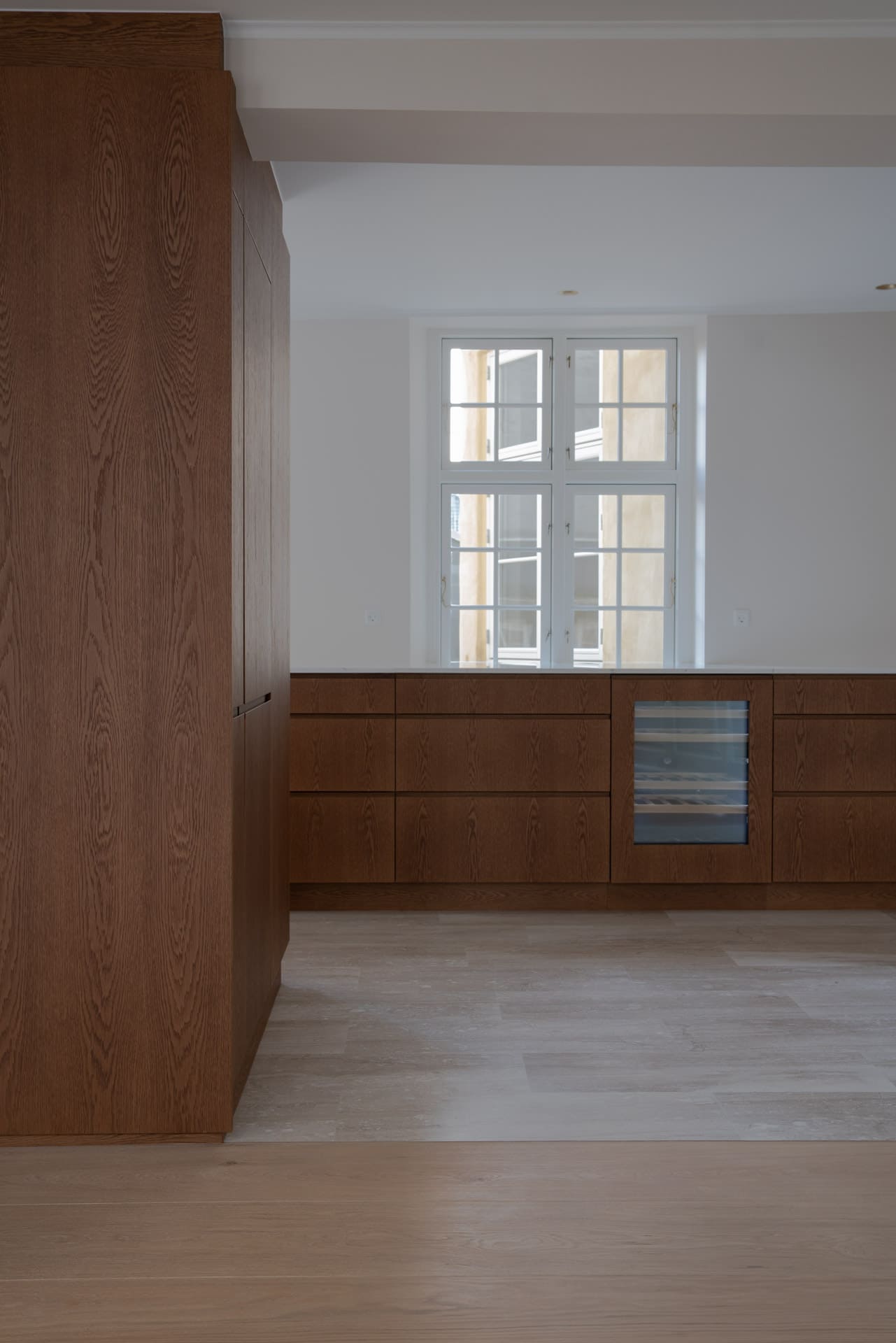
When wood is used consistently throughout the interior – from wood floors to kitchens, walls, and ceilings – a seamlessness is achieved, creating a well-thought-out and harmonious home. Here, it’s important to work with contrasts between different surfaces and treatments to avoid an overly monotonous interior.